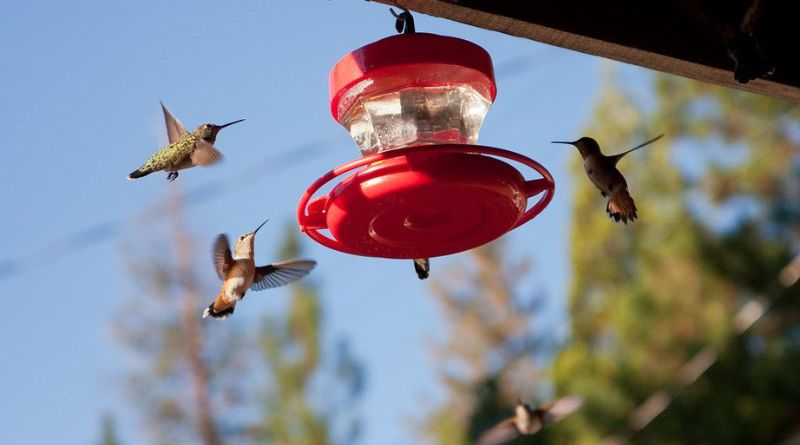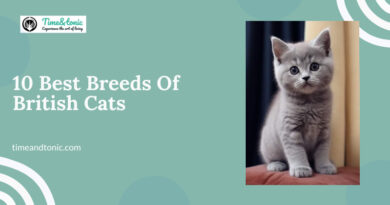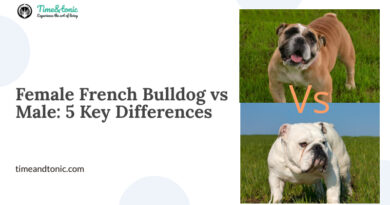The 10 Worst Places to Hang a Hummingbird Feeder
Worst Places to Hang a Hummingbird Feeder – Hummingbird feeders serve as essential havens for these enchanting creatures, offering sustenance and drawing them into our immediate surroundings. However, the placement of these feeders plays a pivotal role in ensuring the well-being of hummingbirds. In this exploration, we delve into the worst places to hang a hummingbird feeder.
From the perilous proximity to predators to the pitfalls of excessive sunlight or shade, each aspect is scrutinized. The goal is to illuminate the potential hazards that may compromise the safety, comfort, and feeding habits of these delicate birds. By understanding the significance of proper placement, we aim to foster an environment that not only attracts but also nurtures hummingbirds, contributing to the preservation of these vibrant and vital members of the avian world.
Importance of choosing the right location for a hummingbird feeder
Selecting the right location for a hummingbird feeder is crucial for several reasons. First and foremost, it directly impacts the safety of the hummingbirds. Placing the feeder in areas with high human or pet traffic increases the risk of disturbances, potentially causing stress or harm to these delicate birds.
Moreover, the environmental conditions surrounding the feeder significantly influence the well-being of hummingbirds. Exposure to extreme weather conditions, such as direct sunlight or heavy rainfall, can adversely affect the quality of the nectar and, consequently, the health of the hummingbirds.
The feeder’s location also plays a vital role in attracting hummingbirds. Placing it near natural food sources and away from potential hazards ensures that hummingbirds feel secure and can easily find the feeder.
In essence, the right location for a hummingbird feeder is not merely about convenience; it is a conscientious decision that prioritizes the safety, health, and accessibility of these captivating creatures, contributing to a harmonious coexistence between humans and hummingbirds.
Also, Read – Best Chicken Breeds for Eggs
Worst Places to Hang a Hummingbird Feeder
Direct Sunlight
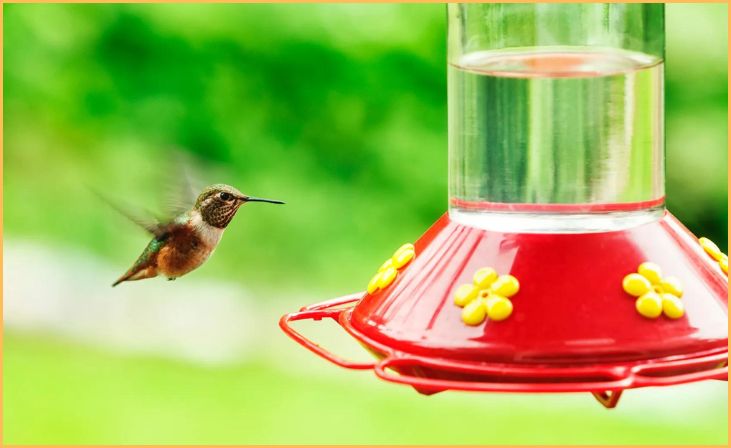
Avoid hanging hummingbird feeders in direct sunlight, as the heat can spoil nectar quickly and make the feeder too hot for the birds. Optimal locations offer some shade to maintain nectar quality and prevent overheating.
Near Windows
Steer clear of hanging hummingbird feeders near windows to prevent collisions. Hummingbirds might mistake reflections for open spaces, leading to accidents. To safeguard these tiny birds, place feeders away from windows or use decals to reduce reflections and minimize the risk of collisions.
Too Close to Other Feeders
Avoid placing multiple hummingbird feeders too close to each other. Hummingbirds are territorial and may engage in aggressive behavior if feeders are in close proximity. Spacing them apart prevents territorial disputes, ensuring that each feeder serves as a peaceful feeding station for these small, vibrant birds.
Underneath Eaves or Overhangs
Refrain from hanging hummingbird feeders directly underneath eaves or overhangs. While sheltered areas might seem ideal, rainwater can dilute the nectar in the feeder, affecting its attractiveness to hummingbirds. Choose locations where the feeder is partially exposed to the elements, striking a balance between protection and exposure. This helps maintain the quality of the nectar and enhances the overall appeal of the feeder to these agile, tiny birds.
In Areas with Pests
Avoid hanging hummingbird feeders in areas with high pest activity, such as bees, wasps, or ants. Pests can disturb and discourage hummingbirds from feeding comfortably. Opt for locations where pests are less prevalent to create an inviting environment for these small birds. Implementing ant moats or bee guards on feeders can also help manage unwanted visitors and enhance the overall hummingbird feeding experience.
Next to Windy Areas
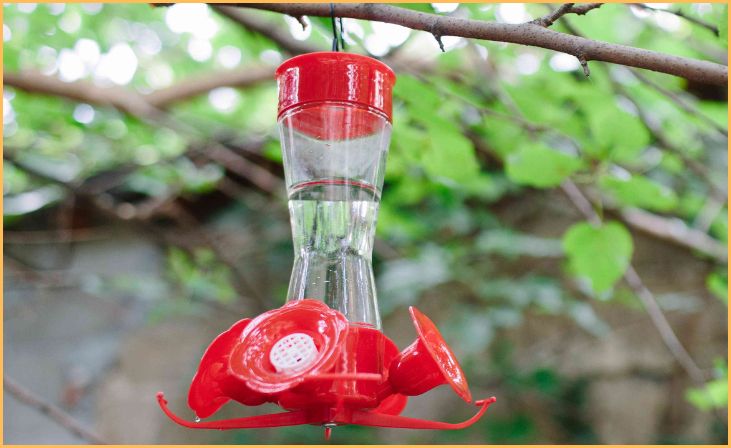
Refrain from placing hummingbird feeders in excessively windy areas. Strong winds can cause the feeder to swing excessively, making it challenging for hummingbirds to feed and leading to spills.
Choose sheltered locations to minimize wind impact, ensuring a more stable and accessible feeding environment for these delicate birds. Hanging feeders in areas with reduced wind exposure enhances their usability and attractiveness to hummingbirds.
Also, Read – Biggest State Parks in North Carolina
Too Close to Bird Feeders
Keep hummingbird feeders separate from bird feeders, as larger birds at bird feeders can be aggressive, intimidating hummingbirds. Placing hummingbird feeders too close to bird feeders may result in territorial conflicts and deter hummingbirds from feeding.
Create distinct feeding zones to accommodate the different needs and behaviors of various bird species. This ensures a more harmonious coexistence, allowing hummingbirds to enjoy their feeding space without the interference of larger, more dominant birds.
Near Gardens with Pesticides
Avoid hanging hummingbird feeders near gardens treated with pesticides. Pesticides can be harmful to hummingbirds, affecting their health and well-being. Opt for locations away from pesticide-treated areas to provide a safer environment for these tiny birds.
Choose garden spots that prioritize natural and hummingbird-friendly plantings, reducing the need for harmful chemicals. This ensures that the nectar in the feeders remains free from potentially harmful residues, promoting the overall well-being of hummingbirds in your vicinity.
In Heavy Traffic Areas
Do not place hummingbird feeders in heavy traffic areas, as constant human activity can stress the birds, making them reluctant to feed. Opt for quieter locations where hummingbirds can comfortably access the feeder without disturbance.
Creating a serene and calm environment encourages these vibrant birds to visit regularly and enhances the overall hummingbird-watching experience. Consider placing feeders in more secluded or peaceful spots to minimize disruptions and maximize the enjoyment of observing these agile creatures.
In Extreme Heat or Cold
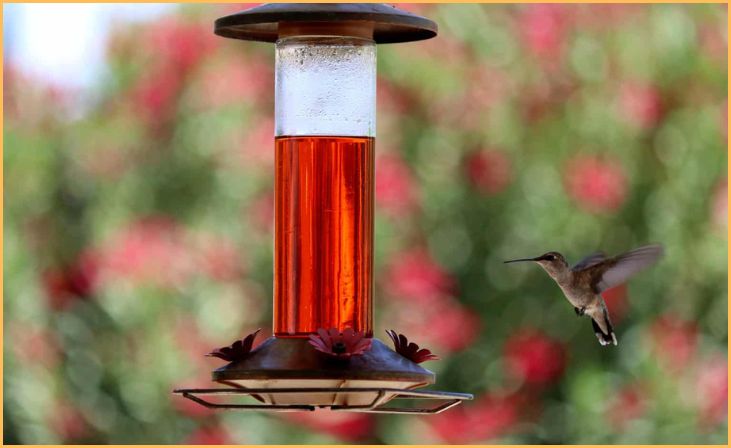
Avoid hanging hummingbird feeders in areas with extreme heat or cold. High temperatures can cause the nectar to spoil more quickly, and excessively cold conditions can affect the fluidity of the nectar. Find locations with moderate temperatures to maintain the quality of the nectar and ensure it remains appealing to hummingbirds.
Shelter the feeder from extreme weather conditions, striking a balance that protects both the nectar and the well-being of the hummingbirds. Regularly monitor and adjust feeder placement to accommodate changing weather patterns and provide a reliable food source for these tiny, resilient birds.
Conclusion
In conclusion, the placement of a hummingbird feeder is more than a decorative choice; it directly impacts the well-being of these delicate birds. By avoiding potential dangers, providing proper shelter, and considering environmental factors, we create a haven that encourages the flourishing of hummingbirds.
Each thoughtfully placed feeder contributes to their safety, health, and overall thriving existence. In our shared spaces, it’s a small yet significant step toward fostering a harmonious relationship with these enchanting creatures, enhancing our appreciation for the natural world around us.
FAQs
High-traffic areas increase the risk of disturbances from humans and pets, potentially causing stress or harm to hummingbirds. It’s crucial to provide a quiet and safe environment for these delicate birds.
Direct sunlight can lead to overheating of the nectar, negatively impacting its quality. This, in turn, can affect the health of hummingbirds, making it essential to choose a location with appropriate sunlight exposure.
Reflective surfaces can cause confusion for hummingbirds, leading to distraction from feeding. It’s important to avoid placing feeders near such surfaces to prevent potential disorientation.

